Why Is My Dog Afraid To Go Outside? (Explained)
Most dogs love being outdoors, and one of the greatest joys of having a canine companion is the feeling of being able to enjoy their company in some fresh air and sunshine. Whether it’s a walk in the park or just a game of fetch in the yard, dogs will happily hang out all day with you outdoors.
However, some dogs head towards the door and then steadfastly refuse to go out. What gives?!
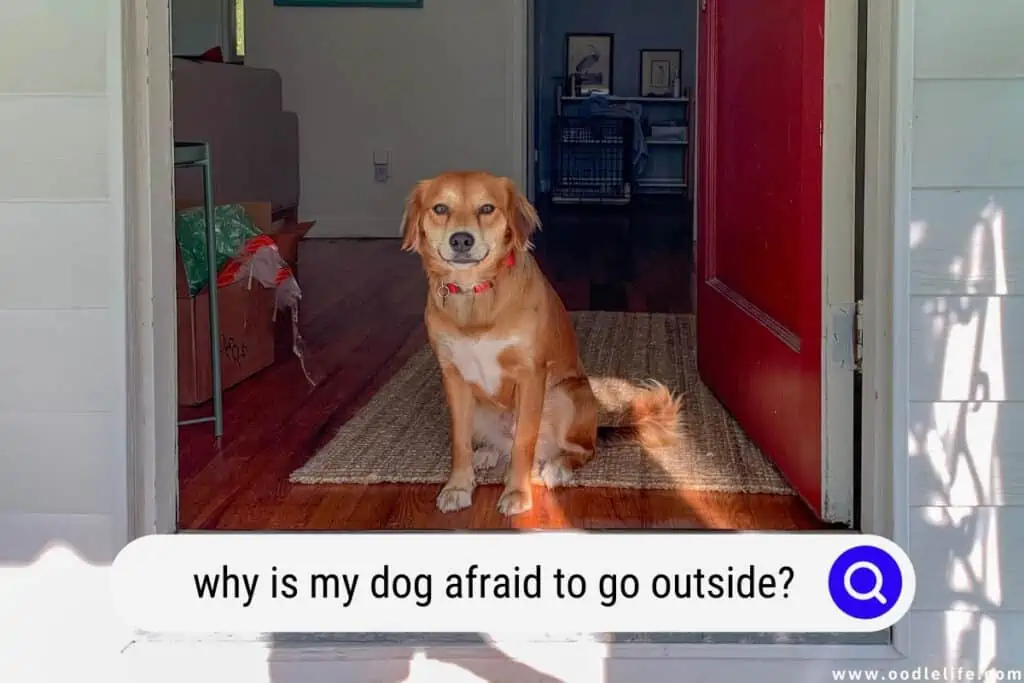
If you’ve noticed that your dog is afraid to go outside, you’re not alone.
There are many possible reasons behind your dog’s fear of the outdoors. Once you have an idea of the reason your dog is afraid of going outside, there are various ways you can help your dog overcome that fear.
In this blog post, we are going to take a good look into the likely causes of the fear your dog is experiencing. We are also going to see some dos – as well as don’ts – when trying to resolve your canine’s fear.
Signs Your Dog Is Scared
It’s important that you clearly understand the signs your dog is giving you. Different dogs show fear in different ways. Being familiar with common canine signs of fear will help you understand your dog’s triggers which in turn will help you resolve the fears your dog is experiencing.
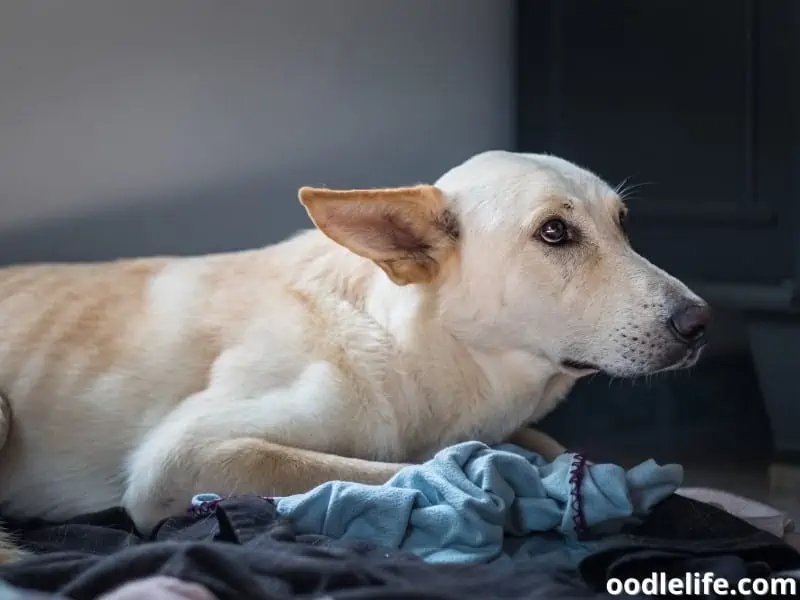
Here are some of the stress signals that could hint that your dog is scared.
- Whining
- Snapping
- Pacing
- Hiding
- Clinginess
- Lip-licking
- Cowering
- Pancaking (when your dog refuses to walk and lies flat on the floor)
- Flattened/pinned back ears
- Tail tucking
- Aggression (includes snapping, excessive barking and growling, and even biting)
- Panting
- Drooling
- Whale eyes (when you can see the whites of their eyes)
- Urination or defecation
Why Your Dog Is Afraid To Go Outside ?
Here are some reasons that may be responsible for making your dog afraid to go outside.
Personality Type
Naturally, dogs tend to be quite excited about interacting with their environment. Most dogs are inquisitive and enthusiastic about even the littlest things.

However, just like human beings have their unique personalities, so do dogs. Some dogs are naturally outgoing and daring, throwing caution to the wind. On the other hand, some tend to be more careful about the things in their environment and about new experiences or people.
For instance, some dog breeds – such as Chihuahuas and Shetland Sheepdogs tend to be more fearful by nature.
Puppy Panic
Puppies that have recently left their mothers and littermates tend to be wary in the beginning of going outdoors. Moving into a new home with a new family is a significant change in the lives of puppies. It can be very overwhelming and stressful for them and this can manifest itself as a fear of just about anything, including the outdoors.
Puppy panic is a very common phenomenon with all dogs, but especially with younger puppies.

Improper Puppy Socialization
Before a puppy turns 14 weeks old, there are key windows of time during which it should be introduced to people, places, objects, and other dogs. These time frames are known as puppy socialization periods and are the best times for the world to be introduced to your puppy.
When puppies miss out on this critical period, it tends to be more difficult to get them comfortable with certain things. If your puppy wasn’t properly introduced to the outside world during this period, it is probably having a hard time viewing the unfamiliar outdoors as a positive and safe environment.

Sound Sensitivity
Sound sensitivity is a possible factor if your dog seems to have suddenly developed a fear of the outdoors. Because dogs receive sounds at a higher frequency than humans, sounds that may be tolerable for a human may be very uncomfortable and frightening for them.

When some dogs hear a sound they consider frightening, they tend to associate that sound with the environment they are in when they hear the sound. So if your dog is suddenly scared of going into the yard, it may have heard a frightening sound there.
The sound could be a variety of things ranging from loud neighbors, fireworks, a gunshot, or a car backfiring. You may not identify the sound in question as a dog’s hearing is four times more sensitive than ours. What your dog is hearing might be missed by you.
If you live in a busy urban area, it’s also possible that your dog prefers the relative quiet that staying indoors offers as opposed to the noise of the activity outdoors.
Trauma From Negative Experiences
Sometimes, when some dogs have negative experiences outside, they become more reluctant to go on walks or to step outside. This negative experience could be anything – getting bitten by an insect in the yard, getting injured outside, encountering a mean dog, or even an unfriendly person.
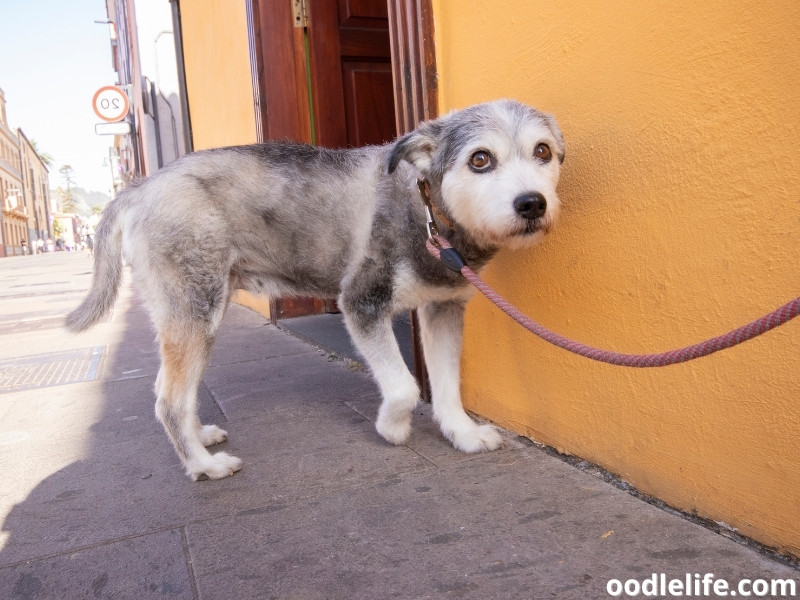
Using electric containment systems like radio fences for boundary training can also be a bad experience for your dog. Sometimes, instead of associating the pain with crossing a specific boundary, your dog may see the entire yard as an unsafe area. Because of the fear of getting shocked, your dog may decide to avoid going outdoors altogether.
If you notice your dog responding this way during boundary training, try using another training method for a while and see if it makes a difference.
New Location
There are various ways that dogs may respond to moving to a new location. While some may be excited and enthusiastic, others may be more afraid or anxious.
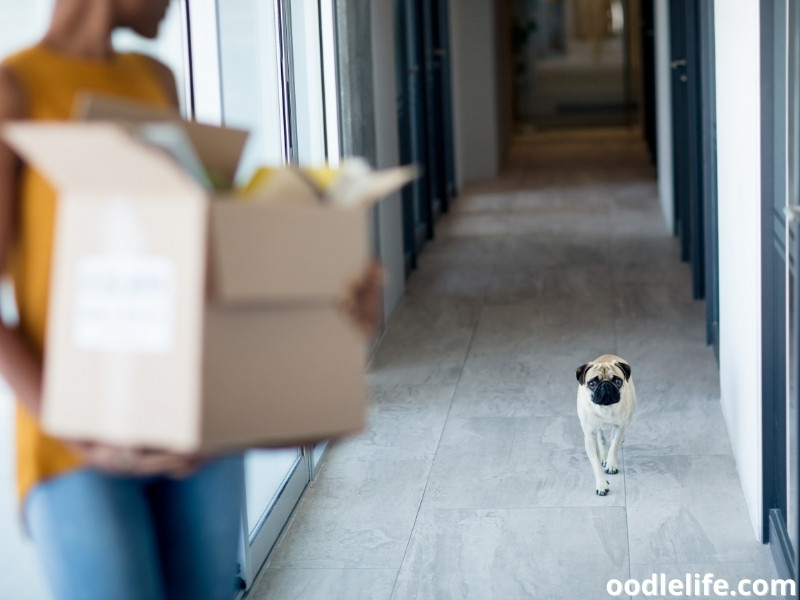
If you just moved into a new location with your dog, it may take some time for your dog to adjust to the new environment.
New unfamiliar noises, the smell of a canine that may have lived in the house before, the neighbors’ dogs, and many more factors than make your dog uncomfortable for a while at the new location.
House Factors
Sometimes, your dog’s fear of going outside may have more to do with the path that leads outdoors than the outdoors itself.
Could something in the house be scaring your dog? Also, if your dog doesn’t have much experience with stairs, it will be a problem for them if there are stairs on the way out.
Some other possible reasons your dog could be afraid of going outdoors include:
- Bad weather – rain, cold, windy conditions
- Pain or illness
- Old age
- No leash training

What Not To Do?
Before we go into some practical steps you can take in helping your dog overcome its fears, it’s just as important that you know what not to do.
- Don’t punish your dog for being afraid. This will not make your dog any less afraid and may even make it begin to dislike or even fear you.
- Don’t force them to go outside.
- Don’t ‘flood’ them. Flooding refers to making your dog face their fears by exposing them to whatever it is they may be afraid of outside. This method may work for humans, but not for dogs.
These are some common mistakes dog owners are inclined to make when trying to resolve their canine’s fears. These actions may not be counterproductive, and they may even make the situation much worse.
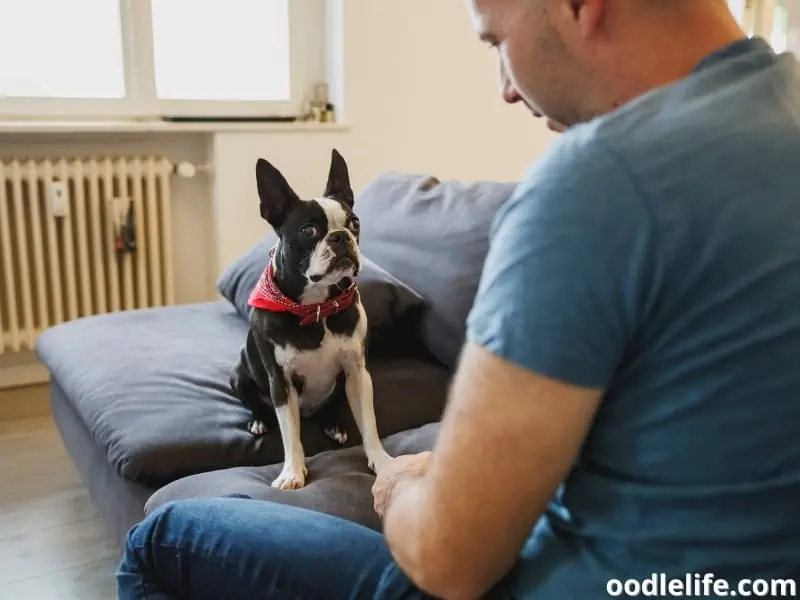
What To Do To Help Your Fearful Dog?
The best way to get your dog comfortable with the outdoors is through desensitization and counter-conditioning techniques.
Desensitization is slowly and gradually familiarizing your dog with the objects and environments that scare them. This is different from flooding because, during desensitization, the dog is exposed to the trigger at a level that doesn’t evoke fear.
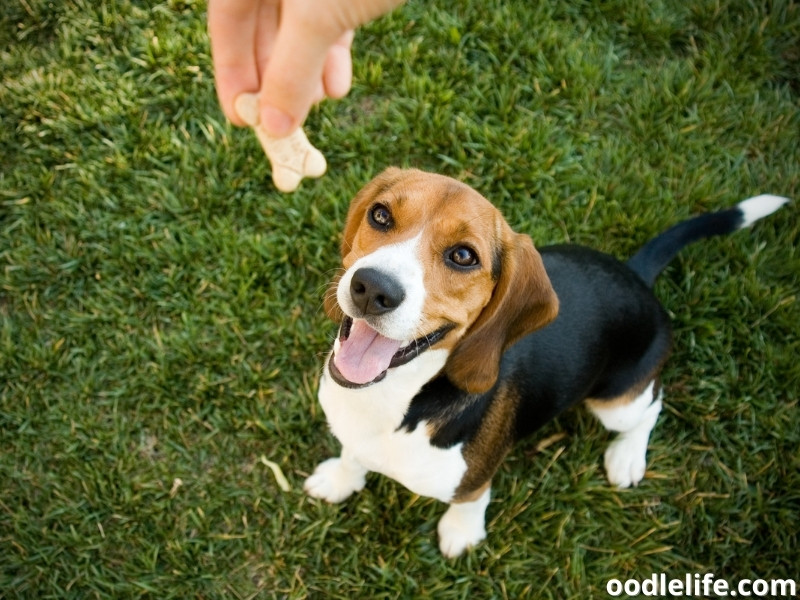
For example, a dog that is afraid of cars can be exposed to one parked at a distance so it can see the car but is too far away to react. If you’re unsure what the trigger is, you can start by placing your dog in front of an open or transparent door that leads to the yard.
As the dog is gradually and continuously exposed to the yard without entering it, they gradually become more comfortable. This may take a while, but you must be patient to understand the signs of your dog.
Counterconditioning is the process of training your dog to develop new associations with its triggers. For instance, if your dog’s trigger is cars, you can feed your dog with some high-value treats when he sees a car. Over time, you can repeat this exercise while bringing your dog closer to a car.
You can also create a treat trail that leads just outside the door into the yard. Gradually, you can begin to increase the length of the treat trail further into the yard.
Another thing you can do is to scatter your dog’s favorite toys throughout the yard. With time, your dog will begin to associate going outside with positive emotions, instead of negative ones.
Desensitization and counterconditioning, when used together, are very effective in resolving your dog’s fear of the outdoors.
Final Thoughts
A fearful dog isn’t a happy one, so it is up to us to help them. With some patience and understanding, you can help your dog overcome its fears and enjoy the time outdoors with you!